Overview
Mastering ASP pricing CMS is crucial for pharmaceutical companies aiming to develop effective pricing and access strategies that align with Medicare reimbursement models. Understanding ASP pricing not only influences reimbursement rates but also empowers companies to leverage comprehensive data insights. These insights are vital for optimizing pricing strategies and enhancing patient access to medications. By effectively utilizing this knowledge, companies can position themselves advantageously within the market, ensuring they meet both regulatory requirements and patient needs.
Introduction
Navigating the complex landscape of pharmaceutical pricing and reimbursement is crucial for companies aiming to optimize their market access strategies. At the heart of this challenge lies the Average Sales Price (ASP), a pivotal model that determines how Medicare reimburses healthcare providers for outpatient-administered drugs. Understanding ASP not only influences reimbursement rates but also shapes competitive pricing strategies that can significantly impact a company’s bottom line.
As healthcare policies evolve, leveraging comprehensive data insights becomes increasingly vital for pharmaceutical firms to refine their pricing models and enhance patient access to essential treatments. This article delves into the intricacies of ASP pricing, the importance of aligning pharmaceutical needs with market dynamics, and strategies for selecting the right content management systems (CMS) to support these efforts effectively.
Understand ASP Pricing and Its Importance in CMS Selection
The Average Sales Price (ASP) serves as a critical pricing model utilized by Medicare to reimburse healthcare providers for outpatient-administered drugs. This model reflects the average price at which manufacturers sell drugs to all purchasers, accounting for discounts and rebates. For pharmaceutical firms, a comprehensive understanding of ASP is crucial, as it directly impacts reimbursement rates and access strategies. With Medicare’s reimbursement structure typically set at ASP pricing CMS plus a 6% add-on, companies can strategically position their pricing to remain competitive while safeguarding profitability. Incorporating CareSet’s comprehensive healthcare data insights significantly enhances the understanding and application of ASP pricing CMS. By utilizing information from over 62 million beneficiaries and 6 million providers, pharmaceutical firms can obtain practical insights that guide their pricing choices and access strategies. For instance, CareSet’s data can help identify trends in reimbursement patterns and competitive pricing, enabling companies to optimize their product offerings effectively.
Recent evaluations underscore the importance of the ASP methodology in controlling costs and ensuring sustainable practices within oncology, particularly as healthcare policies evolve. Maintaining the beneficial aspects of ASP in future reimbursement models is vital for community oncology practices and patient access to essential treatments. As healthcare economist Susan Weidner emphasizes, decisions regarding changes to Medicare Part B reimbursement must be based on empirical data instead of theoretical models, highlighting the necessity for data-driven strategies in navigating ASP pricing CMS, which will significantly affect pharmaceutical access in 2025. Companies are increasingly optimizing their pricing strategies based on ASP insights provided by the ASP pricing CMS, resulting in lower generic drug pricing compared to brand innovators. This trend not only enhances access to commerce but also aligns with the broader goal of improving patient outcomes. Practical examples demonstrate how pharmaceutical companies utilize ASP pricing CMS data, incorporating insights from CareSet, to improve their pricing strategies, ensuring they fulfill both demand and reimbursement criteria effectively. As the Medicare reimbursement environment changes, grasping the complexities of ASP pricing CMS, especially through CareSet’s data insights, will continue to be essential for pharmaceutical firms seeking to enhance their access strategies and optimize their product offerings.
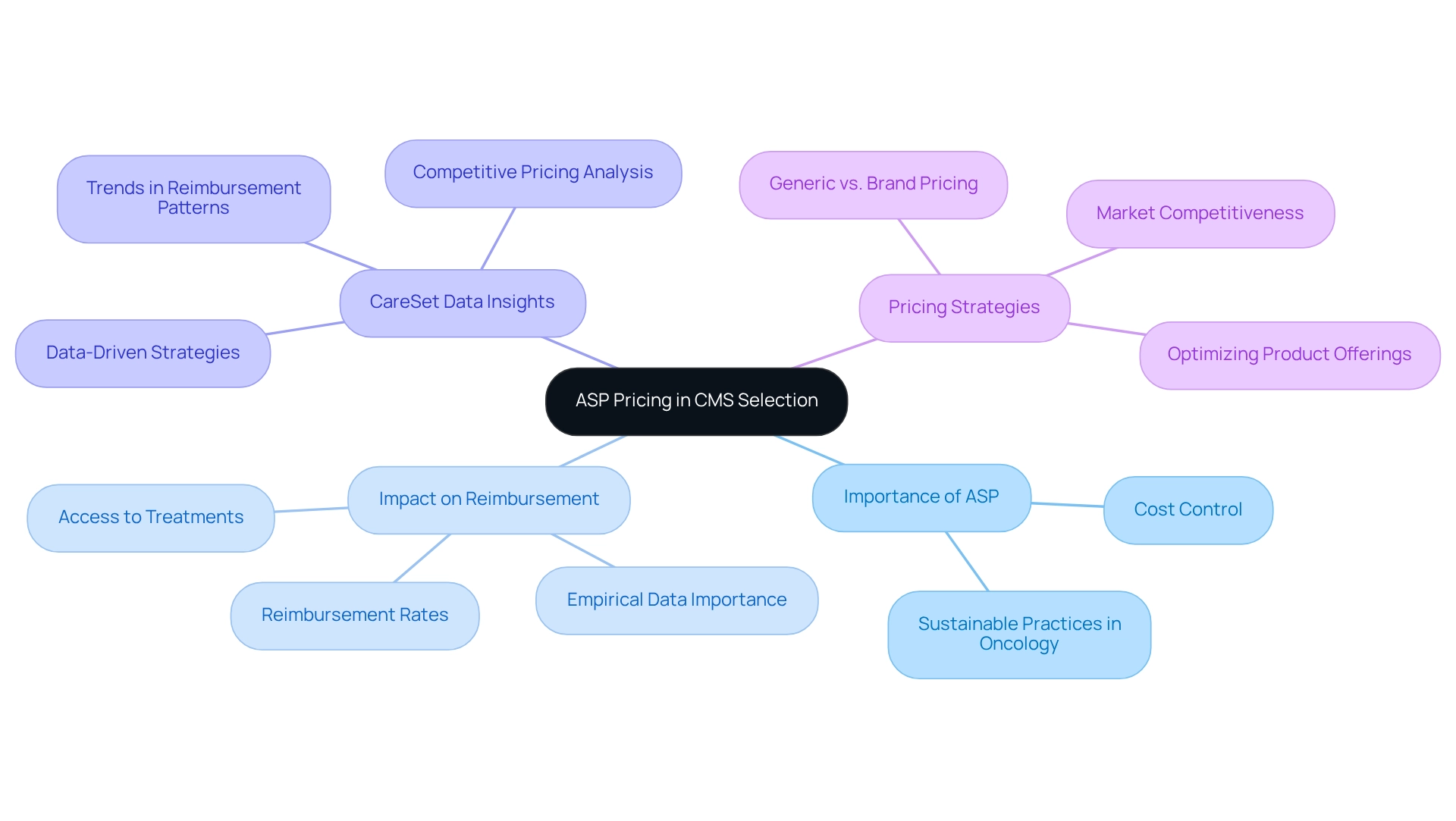
Identify Your Pharmaceutical Needs and Objectives
Carrying out a comprehensive evaluation of your pharmaceutical requirements is crucial for successful access strategies. Begin by assessing the categories of medications you provide, the demographics of your intended patients, and the specific obstacles you encounter in the industry.
Establish clear objectives that align with your overall strategy, such as:
- Improving patient engagement
- Enhancing data analytics capabilities
- Streamlining compliance processes
For instance, if your goal is to enhance access to a new drug, ensure that your CMS supports advanced data analytics to identify potential prescribers and relevant patient populations. Documenting these needs and objectives will provide a solid foundation for your CMS selection process, enabling you to navigate the complexities of ASP pricing CMS, Medicare pricing, and reimbursement effectively.
Recent studies indicate that understanding the therapeutic class of your products can significantly impact rebate estimations under Medicare Part D, influencing net spending estimates. This underscores the importance of aligning your goals with current industry dynamics.
As the Centers for Medicare & Medicaid Services (CMS) prepares to publish the Minimum Fair Prices (MFPs) by September 1, 2024, and implement them by January 1, 2026, staying informed about these developments is essential. Lower out-of-pocket costs for patients could lead to increased utilization of selected drugs, ultimately benefiting manufacturers.
CareSet identifies 15% more targets and 250% more patients than top claims vendors, providing a competitive advantage in understanding industry dynamics. By thoroughly assessing your pharmaceutical needs and defining clear objectives, you can position your organization for success in the evolving landscape of Medicare pricing, particularly with regard to ASP pricing CMS.
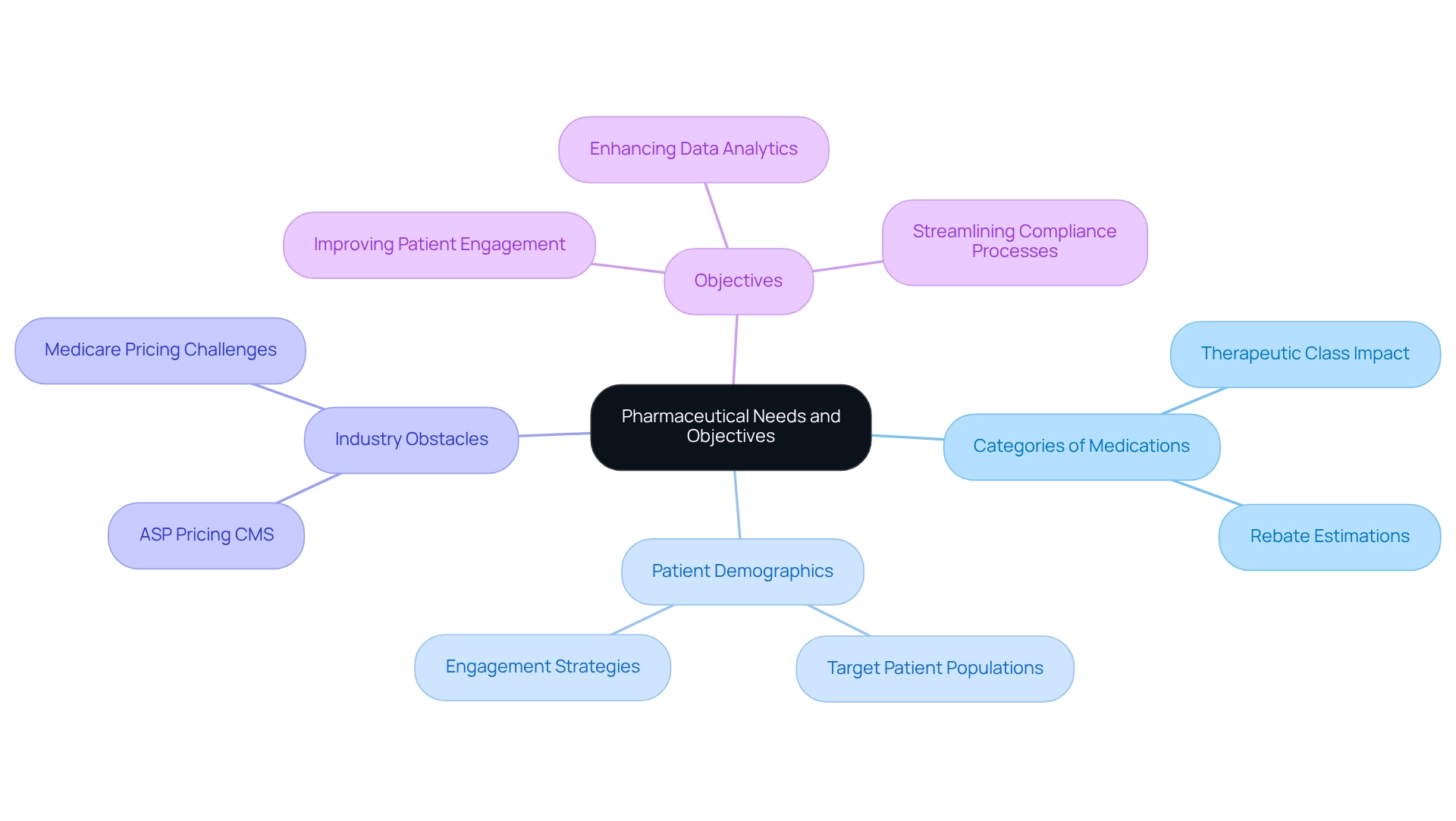
Evaluate Essential Features of ASP-Based CMS Platforms
When evaluating platforms for ASP pricing CMS, it is essential to consider the following key features.
- Data Integration: The CMS should seamlessly integrate with existing data sources, particularly Medicare claims data, to deliver comprehensive insights that inform decision-making.
- Compliance Management: Look for functionalities that facilitate regulatory compliance, including tracking changes in ASP pricing CMS and adhering to reporting requirements.
- User-Friendly Interface: A user-friendly interface is vital for ensuring that team members can navigate the CMS efficiently, maximizing its utility across the organization.
- Analytics and Reporting Tools: Robust analytics capabilities are crucial for monitoring performance metrics and generating actionable insights that drive strategic initiatives.
- Customization Options: The ability to tailor the CMS to specific workflows and processes enhances operational efficiency and user satisfaction.
Prioritizing these features will enable you to select a CMS that not only meets your operational needs but also aligns with your strategic goals. As the Centers for Medicare & Medicaid Services (CMS) transitions to a monthly Special Enrollment Period starting January 1, 2025, the importance of effective data integration and compliance management will be paramount for pharmaceutical companies aiming to optimize their market access strategies. Furthermore, with CMS estimating that up to three million seniors could benefit from the low-income subsidy program but are currently not enrolled, leveraging a robust CMS platform can help identify and engage these beneficiaries effectively.
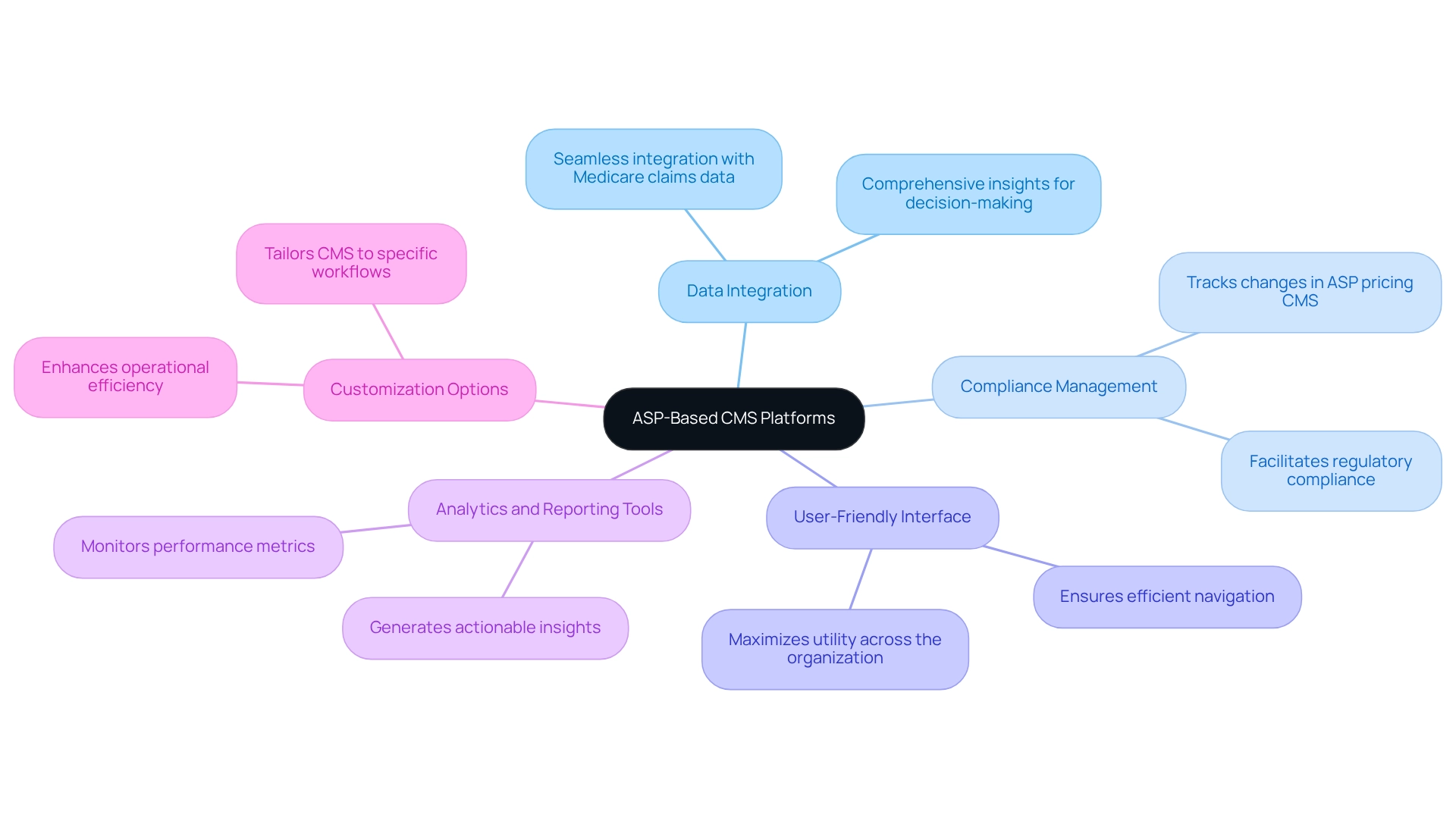
Assess Costs and Budget Considerations for CMS Platforms
Assessing expenses related to ASP pricing CMS platforms extends beyond the initial purchase price. Key factors to consider include:
- Licensing Fees: Evaluate whether the CMS operates on a subscription basis or requires a one-time licensing fee, as this can significantly impact long-term budgeting.
- Implementation Costs: Factor in expenses related to the setup of the CMS, including data migration and staff training, which are crucial for a seamless transition.
- Ongoing Maintenance: Consider the costs of continuous support, updates, and maintenance to ensure the CMS remains functional and compliant with evolving regulations.
- Return on Investment (ROI): Analyze the potential ROI by examining how the CMS can enhance operational efficiency, improve patient engagement, and ultimately increase revenue.
In 2025, comprehending the average expenses of CMS platforms for pharmaceutical companies is essential, particularly as licensing fees and implementation expenses can vary widely. Recent case studies underscore the necessity for policy adjustments to assist hospitals, emphasizing that rising expenses and insufficient reimbursement jeopardize the provision of high-quality care. Addressing these structural influences on expenses is vital for preserving access to hospital care, which subsequently impacts pharmaceutical strategies, particularly in terms of ASP pricing CMS. By thoroughly evaluating these financial factors, you can make informed monetary decisions that align with your pharmaceutical goals, ensuring that your investment in ASP pricing CMS platforms yields significant advantages.
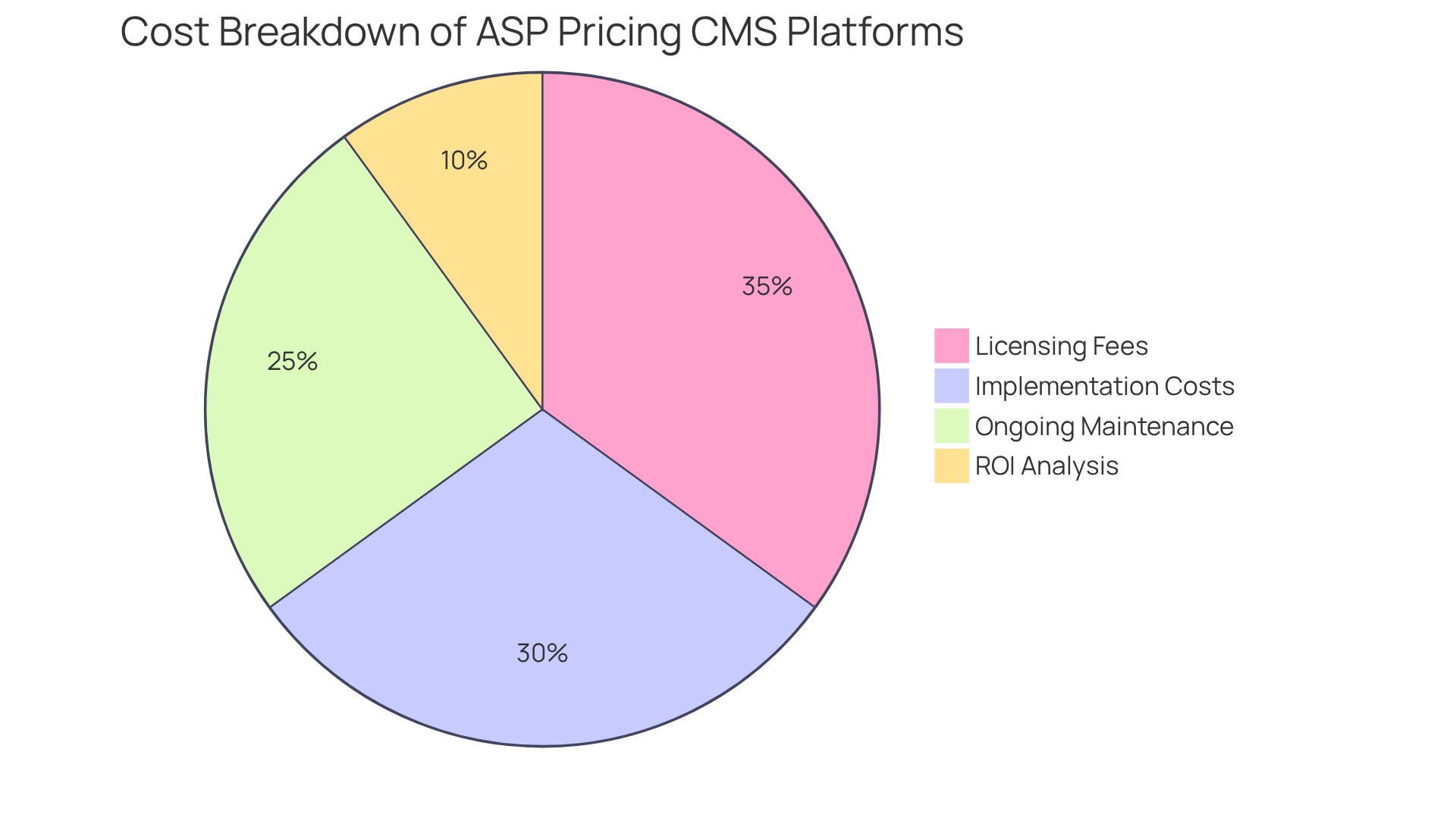
Compare and Analyze Different ASP-Based CMS Options
To effectively compare various ASP pricing CMS options, it is essential to develop a comprehensive comparison matrix that encompasses the following criteria:
- Feature Set: Identify and list the critical features of each CMS, rating them based on their alignment with your specific needs and operational goals.
- Expenses: Provide a detailed breakdown of all associated expenses, including licensing fees, implementation charges, and ongoing maintenance. Regular expense evaluations and updates are vital for effective financial management, ensuring a thorough understanding of the monetary implications.
- User Feedback: Gather and analyze user reviews and testimonials to assess satisfaction levels and uncover any recurring issues that may impact usability. Data quality and reliability are essential for the credibility and precision of expense estimates, making this analysis critical.
- Vendor Support: Evaluate the extent of support provided by each vendor, focusing on aspects such as training, troubleshooting, and ongoing assistance to ensure a smooth operational experience.
- Scalability: Assess whether the CMS can accommodate growth and adapt to evolving organizational needs over time, particularly in relation to ASP pricing CMS. Additionally, consider referencing case studies, such as those discussing contingency reserves in cost estimation, to illustrate how organizations can manage risks effectively and ensure financial viability.
By meticulously analyzing these factors, you can make an informed decision that aligns with your pharmaceutical strategies and operational requirements, ultimately enhancing your market access and patient engagement efforts.
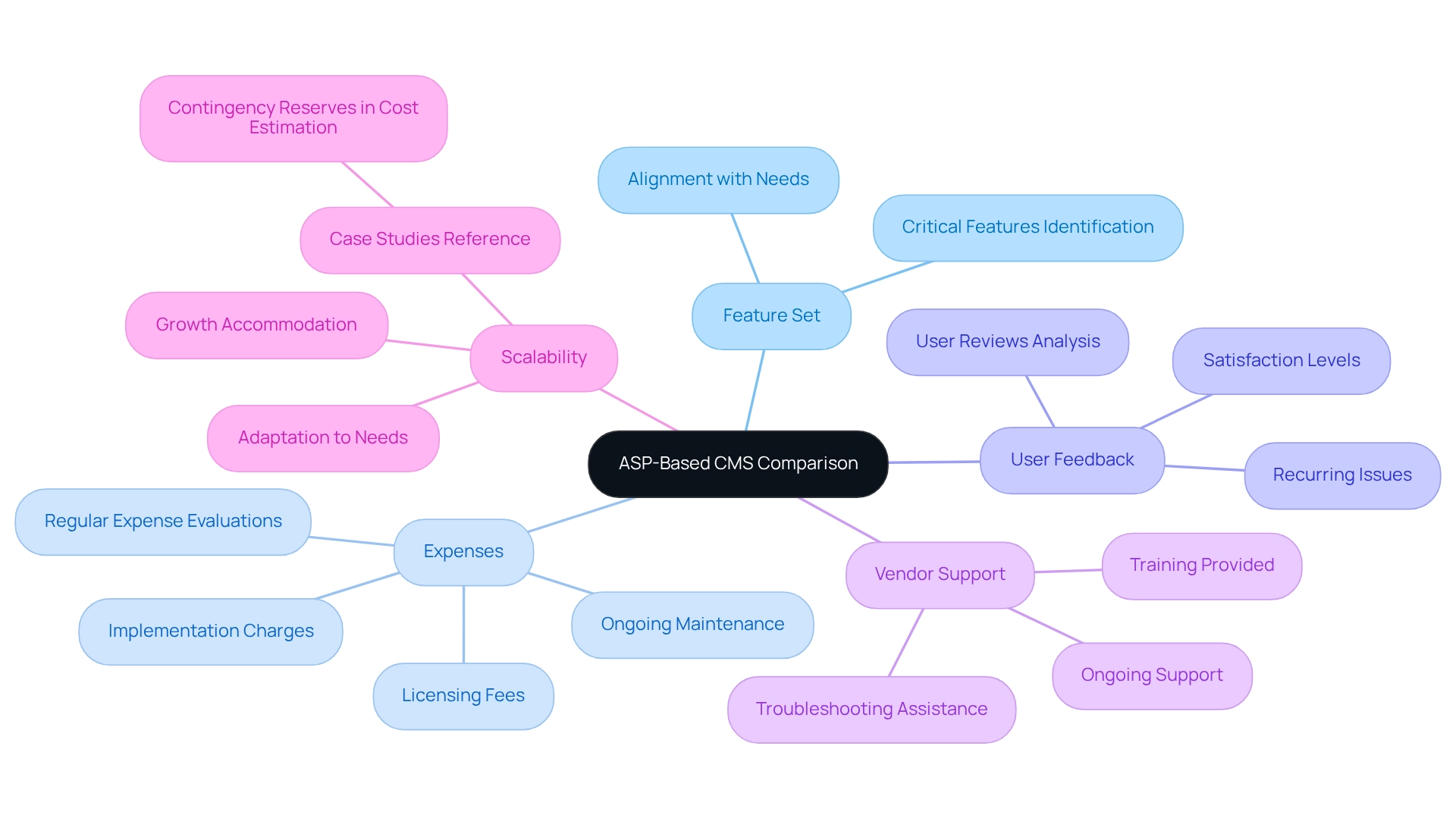
Conclusion
Understanding the intricacies of Average Sales Price (ASP) is paramount for pharmaceutical companies navigating the evolving landscape of Medicare reimbursement. By leveraging comprehensive data insights, such as those from CareSet, firms can strategically position their pricing models to enhance market access while ensuring compliance and profitability. The evaluation of ASP not only influences reimbursement rates but also serves as a critical component in shaping competitive pricing strategies that directly impact a company’s success.
Identifying pharmaceutical needs and aligning objectives with market dynamics is essential for effective market access strategies. By documenting specific goals, companies can better select content management systems (CMS) that support their operational requirements and enhance patient engagement. As the healthcare environment continues to shift, staying informed about policy changes, such as the upcoming Minimum Fair Prices, will further empower organizations to adapt and thrive.
When selecting an ASP-based CMS, it is crucial to evaluate key features that facilitate data integration, compliance management, and user-friendliness. A thorough assessment of costs, including licensing fees and implementation expenses, alongside potential ROI, will ensure that the chosen platform aligns with financial objectives. By comparing various CMS options and analyzing user feedback, organizations can make informed decisions that bolster their market access strategies and ultimately improve patient outcomes.
In conclusion, the interplay between ASP pricing, data-driven strategies, and effective CMS selection will remain vital for pharmaceutical companies aiming to optimize their market access efforts. By prioritizing these elements, firms can navigate the complexities of the pharmaceutical landscape, enhance patient access to treatments, and secure a competitive edge in an ever-evolving marketplace.


